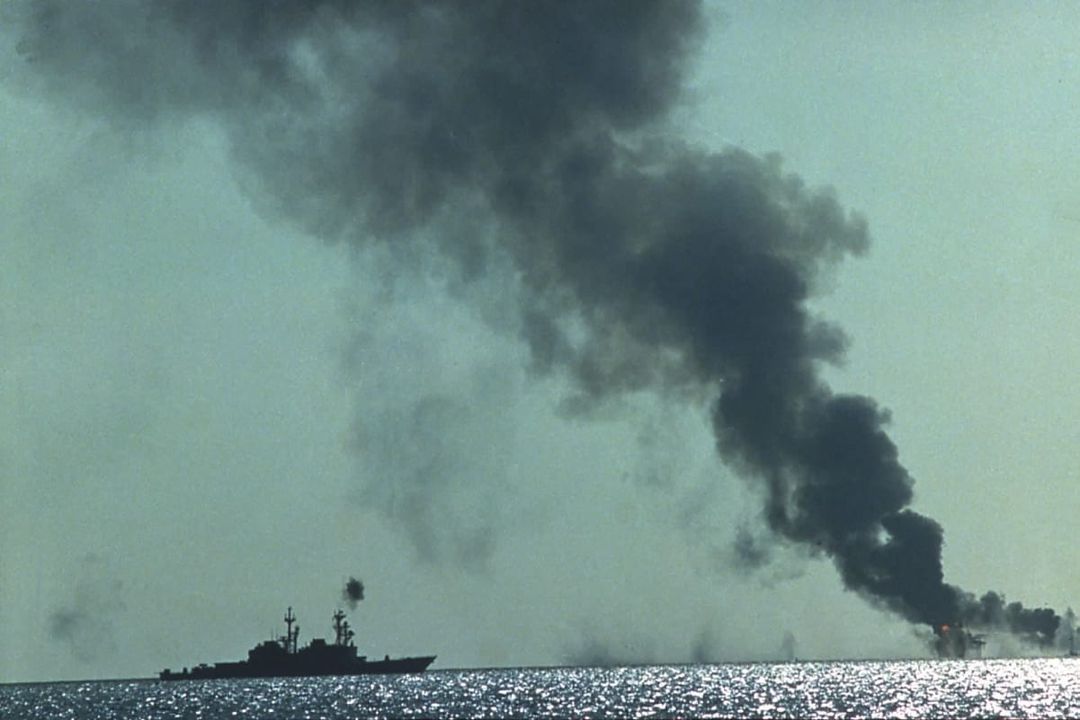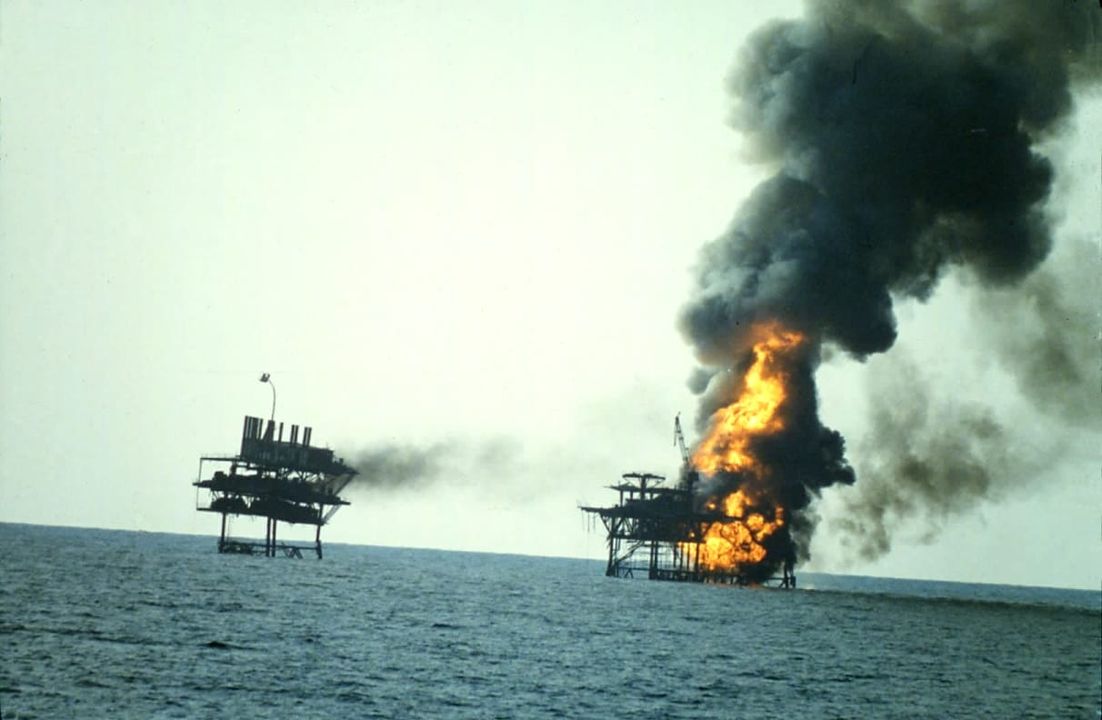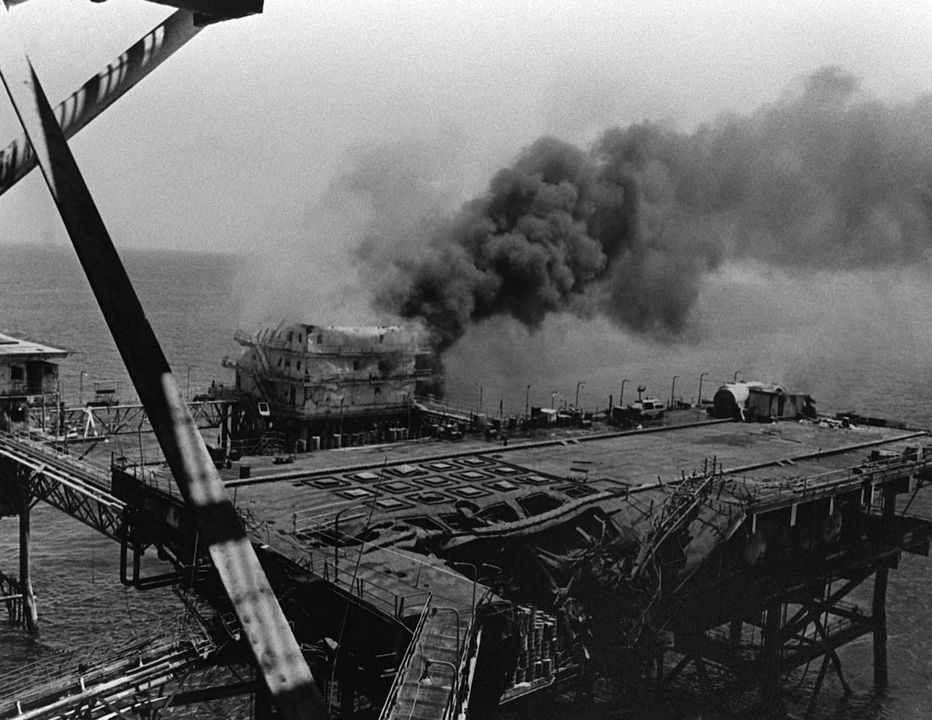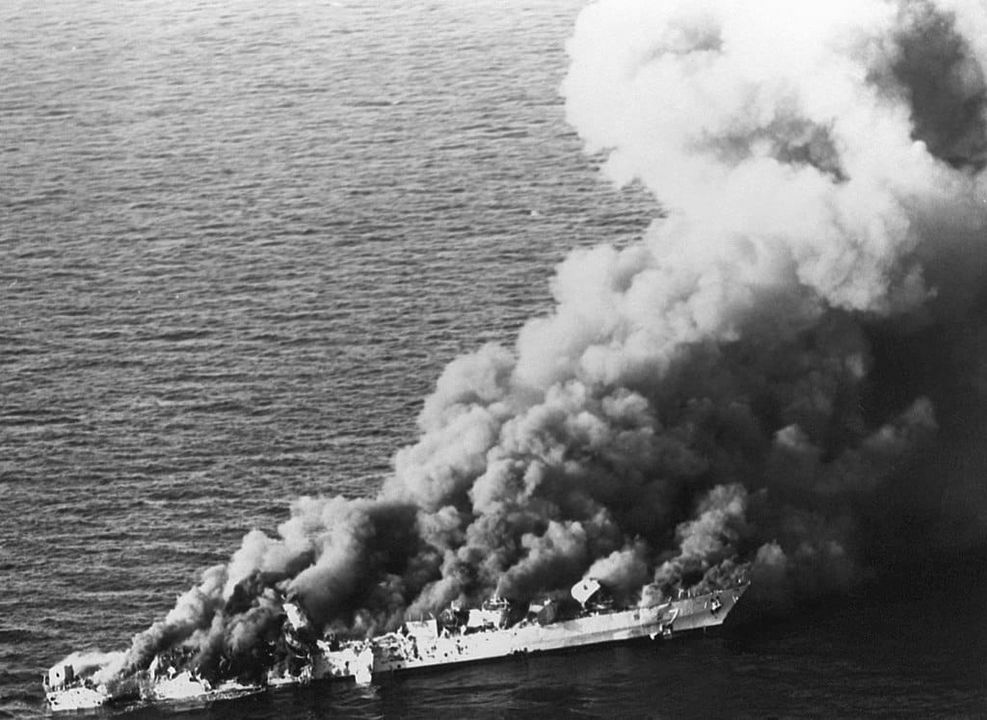Operation Praying Mantis: The Time the U.S. Navy Crippled the Iranian Navy in 8 Hours

The Mining of the U.S.S. Samuel B. Roberts
So… A few days ago, I talked about the mining of the U.S.S. Samuel B. Roberts while it was on deployment in the Persian Gulf. The mine itself had actually been deployed by Iran in response to American warships escorting Kuwaiti oil tankers.
As you can guess, the United States was none too happy with one of their ships being attacked, so the decision was made to enact a “proportional” response. Thus, three former oil platforms, which were being used by the Iranian Navy to support their operations in the gulf, were selected as targets, as well as two fairly modern Iranian frigates which had been used to attack oil tankers in the past. For this, three groups codenamed “Charlie, Bravo, and Delta” were assembled. These groups consisted of a mix of guided missile destroyers, frigates, at least one assault ship, and one guided missile cruiser.
The Attack Plans and Initial Strikes

Bravo would target two of the platforms, Charlie would take out the third platform, and Delta would hunt down and neutralize the two frigates. Also, the U.S.S. Enterprise (CVN-65) and her group would be parked right outside of the gulf, just in case.
On the morning of April 18, Bravo Group arrived at the Sassan Platform and radioed for the crew to abandon the said platform. At first, it seemed as if the Iranians on board were doing just that until someone began to open fire on the American ships with a 23 mm ZU-23 anti-aircraft gun. This gun did not have the range to hit any of the American ships and as a result, one of the destroyers scored a direct hit on the gun mount with a 5″ shell. After which one final warning was sent, and the remaining personnel evacuated the platform. It was ultimately destroyed after U.S. Marines boarded the platform and placed charges.
Around the same time, Charlie Group arrived at the Sirri Platform and once again, radioed for the Iranians to evacuate. But just like before, the Iranians opened fire with their 23 mm ZU-23 guns. None of these had any effect on Charlie Group, who returned fire with their deck guns and continued to fire until Sirri was completely destroyed. Later that day, Charlie Group would sink an Iranian fast attack ship after it attempted to engage the task force with missiles.
Escalation and Iranian Counterattacks
By now, Iran was aware of what was going on and decided to target any ships they found. One of these vessels, the Willie Tide, sent out a distress signal that was intercepted by the Enterprise. As a result, a wing of A-6 Intruders and a few F-14 Tomcats were deployed to rescue the Willie Tide, which was being attacked by Iranian “Boghammar” speed boats. One of these boats was sunk after an A-6 dropped a cluster bomb on it as it tried to flee.
Iran also launched a wing of F-4 Phantoms to engage the American ships, but they fled after one of them was damaged by a surface-to-air missile. By now, the U.S. had not only managed to destroy two platforms but also damaged an F-4 and sunk an Iranian vessel which was not on their list of targets. But just as the U.S. was considering standing down, Delta Group radioed that they had found one of the Iranian frigates, the IRIS Sahand.
Eliminating the Iranian Frigates

As a result, the A-6s from the Enterprise buzzed the frigate to confirm it was indeed one of the ships they were looking for. But the Sahand opened fire on the aircraft as they passed, to which the Intruders circled around and sent the message:
“I’m going to sink you now.”
They did this by firing a pair of Harpoon missiles which struck the ship before making another pass and dropping a pair of 1000lb bombs on the deck before flying off, leaving Delta Group to show up and finish off the now sinking Sahand.
But as the Intruders were making their way back to the Enterprise, they ended up passing the other Iranian frigate, IRIS Sabalan. Now I must point out that the A-6s only had a pair of bombs left and were willing to leave the Sabalan alone. But after the frigate opened fire, one of the pilots decided to engage the would-be attacker and conducted an old-fashioned dive-bombing run on the Sabalan with its one remaining 500lb bomb—a bomb that went through the superstructure and exploded in the engine room, effectively crippling the vessel and leaving it dead in the water.
The Aftermath and Ceasefire

By the time a ceasefire was called, the U.S. Navy had not only managed to destroy two platforms but also sink three vessels (Sahand, one fast attack ship, and one Boghammar) and damage an F-4 Phantom while crippling the Sabalan. The U.S. only lost one helicopter after it crashed after dark, killing the two-man crew on board.
Iran did try to strike back with a failed attempt to engage a destroyer with a Silk Worm missile later that night. It also attempted to take the U.S. to court for destroying two of their “oil rigs,” which failed since they were not being used to pump oil, nor was there any rule saying oil rigs were not to be attacked.










